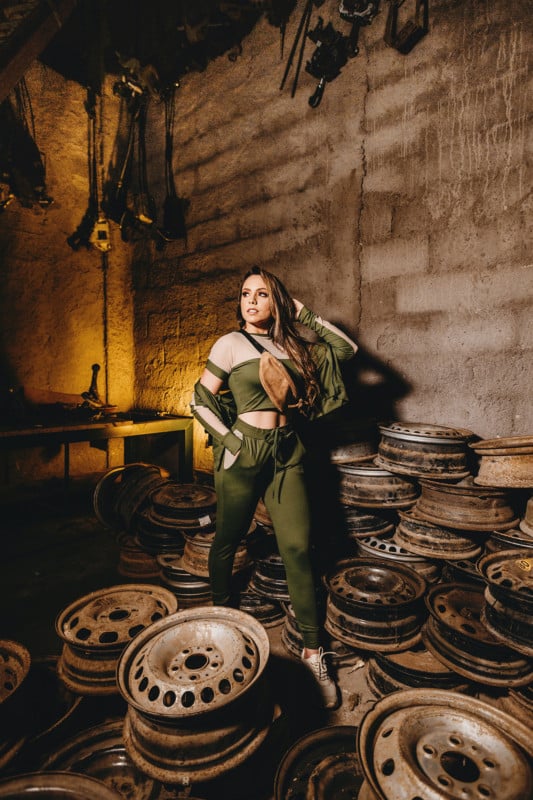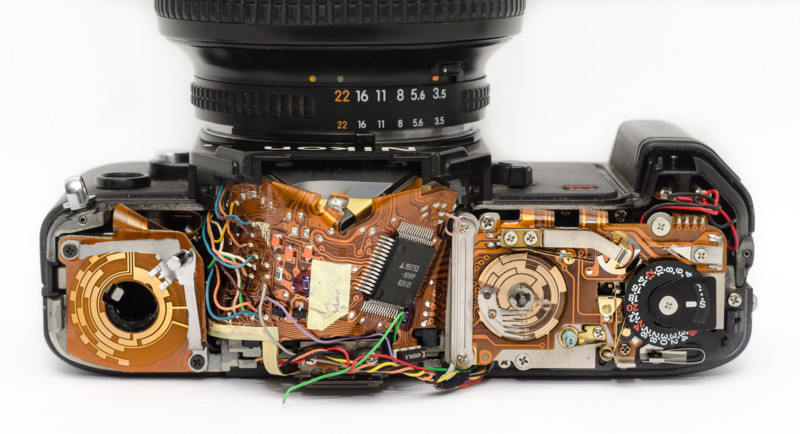![]()
Recently, we had a private Facebook group member ask what others thought about buying a used digital camera. The response was around 70% for and 30% against.
Those odds aren’t that bad. But, with your money on the line, do you want to take a chance your used digital camera will go kaput in a few months… or on day 31 of a 30-day warranty (if you get that option)?
To increase your chances of getting a used digital camera that doesn’t turn into a dud… read on.
To Buy Or Not To Buy A Used Camera? That Is the Question!
One of our insightful members has this recommendation when it comes to buying a used camera or electronics in general:
I’m sure you can find a lot of deals. But having worked for an electronics company in the past, I tell all my family NEVER buy used electronics of any kind.
Electronic merchandise is harder to repair than many may think. The thing may work fine initially before it starts showing signs of not working correctly.
To each his or her own but to me, it would not be worth the chance, time, or money.
When was the last time you bought a used car (or even a new one) without checking the mileage? Probably never since a car’s mileage provides a clue to its life expectancy.
For that same reason, before shelling out your hard-earned money for a used camera, you’ll want to know the life expectancy of it. There are other things you’ll want to know too before handing over your money.
Let’s continue with a list of things to look for before buying that used camera you have your eyes on…
What Is the Life Expectancy of Your Camera?
Like your auto, a camera’s life expectancy is determined by how much it’s used. In this case, how many photos you take. But, unlike your car, a used camera doesn’t have a (mileage) counter that is easy to see (or find).
Instead, you’ll need to dig into the Metadata of a photo file to discover how many photos were taken with it. This data is known as a shutter count.
Every time you take a photo, the shutter curtain opens and closes. A shutter can only do this so many times before it stops working… like the various parts in your car’s engine.
When it comes to extracting this data, it’s easier for some cameras vs. others. In fact, one specific brand requires you to jump through some hoops. More on that coming up.
What Is a Camera Shutter Count (Actuation)?
A camera shutter count or the shutter actuation is a recording of how many photos are taken. A digital camera + the actuation count is similar to that of an auto + mileage. The higher the count, well, the closer to the junkyard it will be.
Depending on your camera, make, and model will determine the life expectancy of it.

For example, I have a Nikon D2 (2005) with a shutter actuation of up to 150K. Compare that to my new Nikon Z6 that has a shutter lifespan of 200K.
To find your camera’s life expectancy, you’ll need to refer to the camera manufacturer’s website (Nikon, Canon, Sony) or do a Google search.
Checking Your Camera’s Actuations
For every photo you take, information about your camera’s settings is included within the Metadata, like; the date and time captured, Bit Depth, Dimensions, Color Mode, and more.
In addition to this, other data is stored under the Camera Data (or Exif) section of the Metadata. This includes things like the shutter speed used, the ISO you selected, the aperture, the lens used, and (a lot) more.
![]()
This data is easy to find and see in software like Lightroom, Adobe Camera Raw, Adobe Bridge (image above), etc.
However, when it comes to actuations, you have to dig a little deeper, and it’s harder to find this data. This requires using specialized software that will extract and display the necessary data. Here’s how:
Nikon + Pentax
So, you’re a Nikon user? Me too! Smart choice if I do say so myself.
To extract the number of photos taken, you’ll need to first take a picture. Take a snapshot of anything. For a smaller file, take a photograph of a solid black or white wall. Also, it’s important not to process the photo.
Take this photo and uploaded it to My Shutter Count. It will tell you exactly how many images you’ve taken.
Canon
For some reason, Canon makes it harder to find your shutter number. You can try camerashuttercount.com to see if they can extract it.
If not, you may have to send in your DSLR to Canon to get the information! There’s the “hoop” I referenced earlier.
Sony
Sony user? Check out this website to discover how many photos were taken. Make sure to upload an image that has not been processed.
Will Your Used Camera Stop Working Once It Reaches Its Life Expectancy?
Keep in mind, the life expectancy of your camera is not written in stone. You’re camera is not (in most cases) going to stop working once you go over the “shutter number.” It could die sooner or later.
 Photo by Edu Carvalho | Enjoy life and your camera while you can.
Photo by Edu Carvalho | Enjoy life and your camera while you can.From what I’ve heard from other photographers, they can still get more life out of their camera after exceeding the recommended actuation count. How much varies.
If you happen to wear out your shutter at some point, you can have it replaced. You’ll have to weigh the cost of doing so vs. buying another used camera.
Look For External Damage
 Photo from SkitterPhoto
Photo from SkitterPhotoThere are the obvious and not so apparent imperfections to cameras. Other than dents and scratches on the body, you’ll want to dig a little deeper.
Here are a few tips to look for to see if there’s damage lurking in our outside the body.
One: Remove the body cap to inspect the camera’s vital components; the mirror, the focusing screen, the lens mount contact, etc.
Is there dirt, grime, or oil anywhere? If so, that’s a bad sign! It’s most likely a deal-breaker.
Two: Take a photo. Not any image, though. The goal here is to discover if the sensor is scratched and how dirty it is.
Find a white wall or a bright sky and take the shot. Zoom in on the photo and look for any scratches on the image (short or long lines). If you find any, pass!
Dust spots are more common and are easier to clean. It’s not that uncommon to find a few.
However, if you see dozens, this will give you an insight into how the owner treated the camera.
Three: Once you’ve checked the sensor, take another photo to discover if there are any focus issues.
Is the autofocus operation smooth or jumpy? Is the used camera able to focus on your intended point of focus? After taking the photo, is the area you focused on, well, in focus?
If not, this could be a sign of what is known as back-focusing. This is difficult to repair and you may want to pass once again.
Four: What about the LCD screen? Does it have a protective cover that’s kept it in pristine condition? If not, this could be another indication of how the owner treated their DSLR.
Buy Your Used Camera Gear From a Trusted Dealer or Individual?
It goes without saying that a trustworthy source will have your back. It could be a 30 or 90-day warranty or a money-back guarantee. Or it could be superb customer service. Or all three.
I’ve bought and sold gear on E-bay many times. No more. Too sketchy if you ask me.
I’ve also bought used gear from the big “boxes,” like Adorama and B&H. No more. Too impersonal. I’d rather see and “feel” what I’m buying.
That’s why I recommend buying used camera gear locally. I’m more interested in friendly staff with outstanding customer service and will pay a little more for this. That’s my personal preference.
 Photo from Musa
Photo from MusaFor me, sometimes local is in another country. The closest used camera store is 4 hours away! However, if I hop the border over to Michigan, the closest is about an hour away.
Although I’ve been dying to travel a bit further (2 hours) to a camera store, I discovered not that long ago (see Camera Mall info below).
I’ve heard nothing but great things and look forward to checking out their used and new camera gear once the borders open again (the Pandemic shut down the border crossing the past 6 months).
Buy From a Private Seller?
Would I ever recommend or personally buy from a private seller? Only if the person is known to you! At least that’s my recommendation.
If you decide to purchase used gear from places like eBay, Amazon, classified ads, et al, you can’t “see” or feel the camera. You can only go by the photos provided and the info in the listings. Photos and list items (description) don’t always tell the whole story.
Oh, and they can be Photoshopped too. Does this happen? Maybe. Maybe not. Do you want to take the chance? It’s your money.
The opinions expressed here are solely those of the author and are not necessarily advocated by PetaPixel.com.
About the Author: Chris Parker picked up his first semi-pro camera back in 1989 and hasn’t stopped shooting since. A couple of years later, he was introduced to this new software called Photoshop. Fast forward to 2001 when he decided to purchase his first digital camera, the Fuji S2. He used it in conjunction with his Mamiya to shoot weddings that year. It wasn’t long after that he made the transition from film to 100% digital. After shooting 500+ weddings over 15 years, he retired and now teaches photography + editing. You can find Chris sharing his 30 years of experience in the friendliest Facebook group this side of the Milky Way. He also shares his knowledge on his website. Oh, and he’s begun a Youtube channel where he’ll share additional tips on photography and editing (coming soon). Yeah, you can follow him on Instagram and Pinterest too. But, he’s not that active with those at this time.
This article was also posted here.
Author: Chris Parker
Source: Petapixel



